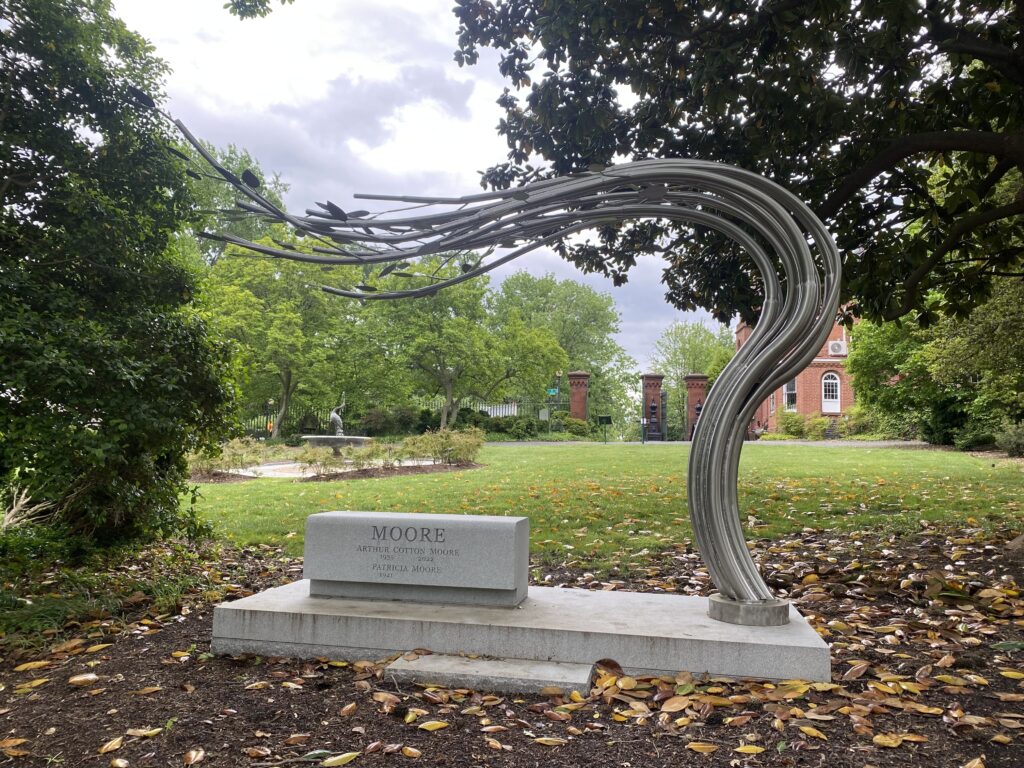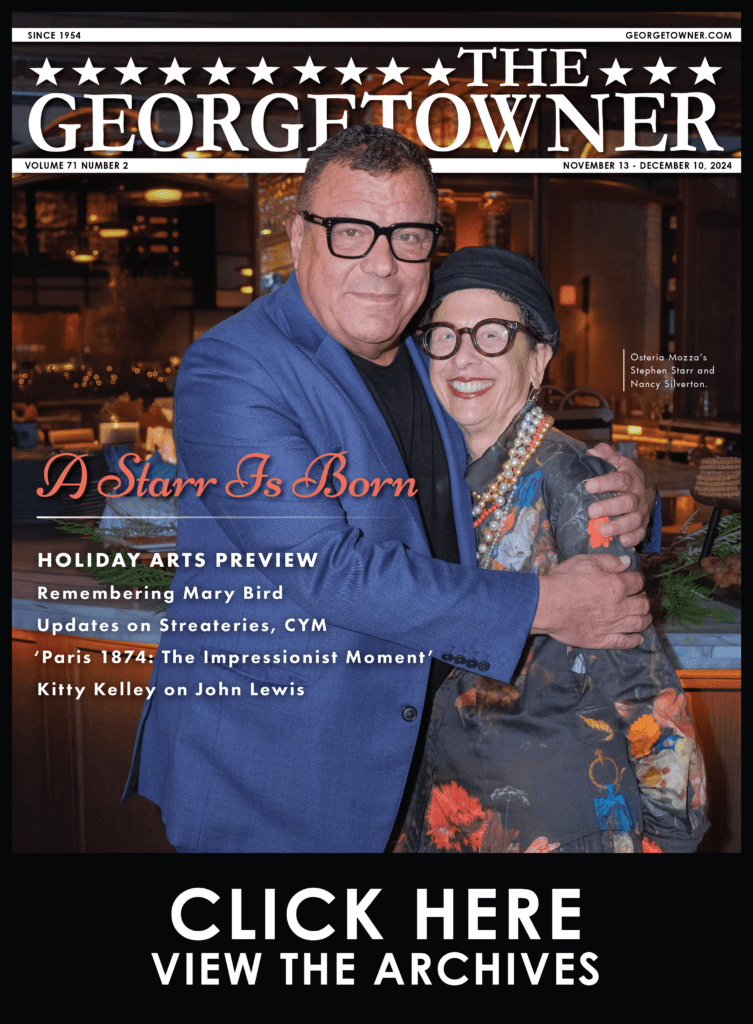Kitty Kelley Book Club: You Can Rest in Peace in Georgetown, If You Can Afford It
By • April 10, 2024 0 868

If you live in Georgetown, you can sin and be saved in the same zip code. Bars and bistros border the 12 square blocks of this historic area, which also offers churches of every denomination: Baptist, Catholic, Christian Science, Episcopal, Lutheran, Methodist and Presbyterian. In addition, there’s the Kesher Israel synagogue on N Street, and a few blocks away the Church of Two Worlds, which offers séances and “communing with the departed.”
When the end draws near or, as W. C. Fields said, “when the fellow in the bright nightgown” beckons, Georgetown offers acres of marble orchards that line God’s waiting room. The largest is Oak Hill Cemetery, whose 22 manicured acres border R Street and meander toward Rock Creek Parkway. On Mill Road off 27th and Q Streets, the Mount Zion and Female Union Band Society Cemeteries share graveyard space with the Old Methodist Burying Ground.
Holy Rood Cemetery on Wisconsin Avenue, owned by Georgetown University, houses 7,000 gravesites, including those of 1,000 free and enslaved African Americans. Georgetown Visitation Monastery Cemetery on 35th Street provides burial for the Sisters of the Visitation of Holy Mary; and the Jesuit Community Cemetery on the grounds of Georgetown University is reserved for its priests, including those who sold more than 272 enslaved individuals for $115,000 in 1838 ($3.14 million in today’s dollars). The Society of Jesus has pledged $100 million to support the education of descendants of those enslaved and sold.
Standing on the scrubby hillside of Mount Zion, founded in 1801, Lisa Fager, executive director of the Black Georgetown Foundation, points toward the gated grounds of Oak Hill Cemetery, where “all the grand white folks are buried.” A few feet away, an anonymous poem written on cardboard and nailed to a tree confirms her words:
These cemeteries stand together
Like Bouda and Pest.
Here, it’s not water than divides
It’s the color test.
Laura Lavelle, office manager of Oak Hill Cemetery, admits as much. In her new book, “Images of America: Oak Hill Cemetery,” celebrating the 175-year-old graveyard, she writes that several families once buried at Mount Zion were removed and reburied in 1849, when Oak Hill first opened its gates and “was only available to rich white citizens.”
“That’s changed … some,” Lavelle says, referencing the page in her book that shows a photo of the gravesite of Peggy Cooper Cafritz, co-founder of the Duke Ellington School of the Arts. “Her memorial on Passionflower Pathway has a unique shape that could be described as a bean or a cloud.” The large gray stone for Cafritz is inscribed: “She was the only woman we knew who could fly without ever leaving the ground.”
Nearby on Violet Pathway is the unmarked gravesite of civil rights activist and lawyer Vernon E. Jordan, who worked closely with President Bill Clinton. “We haven’t yet received the final funerary plans from the family,” says Lavelle. Jordan died in 2021.
Not far away on North Hill, Lavelle points to the grave of Madeleine Albright, the first woman secretary of state, who died in 2022. “We’re awaiting her headstone, and I don’t think you’ll be too surprised to see it carved with a brooch,” says Lavelle. “She was famous for her pins.”
The most visited site at Oak Hill is the mausoleum of William Thomas Carroll, who loaned his family’s crypt to Abraham Lincoln when the president’s 11-year-old son, Willie, died of tuberculosis in 1862. “My poor boy,” said Lincoln in tears. “He was too good for this earth.”
Wracked with grief, the president frequently rode his horse late at night from the White House to be with his child in the cemetery. The fictional retelling of that sad event in George Saunders’s 2017 novel, “Lincoln in the Bardo,” makes this site the one people always want to see.
“Here you can be in the best zip code forever,” says Paul K. Williams, superintendent of Oak Hill. “One of our tombstones reads: ‘We finally found a place to park in Georgetown.’”
“Not everything here is so lighthearted,” he admits. “We had a great deal of controversy, plus three years of litigation, over Ben Bradlee’s mausoleum. It was quite a ruckus, and the legal bills were very expensive.”
One of the most arresting sights you see upon entering Oak Hill is the shiny, 10-foot-high, stainless-steel sculpture of tree branches, with little leaves bending toward the east as if blowing in the wind. Architect Arthur Cotton Moore commissioned it for himself and his wife. “Some find that site stunning. Others, well … not so much,” says Williams. “But I think it’ll be a design hallmark of the 21st century.”
Making Oak Hill your final address can be expensive. Space ranges from $30,000 to $750,000 and, Williams adds, “that’s just for the site. The rest — crypt, plinth, memorial stone, flying angels, whatever — plus the landscape — plants, trees, shrubs — all that is extra. Remember, I’m in the real estate business. And here, like any place else, it’s all about location, location, location.”

